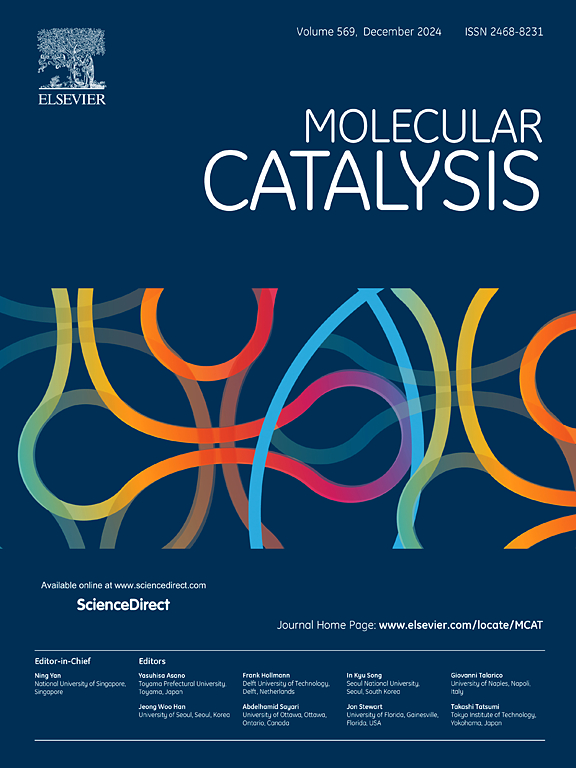hemin功能化导电聚合物作为电化学合成苯并噻唑衍生物的独特宿主基质:一种可持续的方法
IF 4.9
2区 化学
Q2 CHEMISTRY, PHYSICAL
引用次数: 0
摘要
以聚3,4-二氨基苯甲酸(ppdaba)为载体,固定化无毒金属卟啉hemin为电催化剂,用于苯并噻唑类化合物的可持续电化学合成。采用铁氰化物探针、电化学阻抗谱(EIS)、x射线光电子能谱(XPS)、光学轮廓术、FTIR和FE-SEM技术对电催化剂的电化学和形貌属性进行了分析。利用该修饰电极,以各种芳香醛和2-氨基噻吩为原料,电化学合成了苯并噻唑衍生物。反应在三电极系统中进行,氧化电位由循环伏安解析得到,使用高氯酸锂作为支撑电解质,乙醇作为溶剂。所得产物经结晶、纯化和1H-NMR确证,产率在78 ~ 92%之间。基于血红素的多相电催化剂通过减少反应时间和消除繁琐的后处理程序来提高反应效率,从而使该方法非常容易和环保。本文章由计算机程序翻译,如有差异,请以英文原文为准。

Hemin-functionalised conducting polymer as a unique host matrix for the electrochemical synthesis of benzothiazole derivatives: A sustainable approach
An electrocatalyst based on the non-toxic and biologically derived metalloporphyrin hemin, immobilized on poly 3,4-diaminobenzoic acid (PDABA) was utilized for the sustainable electrochemical synthesis of benzothiazole derivatives. Electrochemical and topographical attributes of the electrocatalyst were analyzed critically using a ferricyanide probe, electrochemical impedance spectroscopy (EIS), X-ray photoelectron spectroscopy (XPS), optical profilometry, FTIR, and FE-SEM techniques. The modified electrode was employed for the electrochemical synthesis of benzothiazole derivatives using various aromatic aldehydes and 2-aminothiophenol. The reactions were performed in a three-electrode system, at oxidation potentials derived from cyclic voltametric elucidations, using lithium perchlorate as the supporting electrolyte and ethanol as the solvent. The products obtained were crystallized, purified and confirmed with the help of 1H-NMR spectroscopy, showing yields ranging from 78-92 %. The hemin based heterogenous electrocatalyst enhances the efficacy of the reaction by reducing reaction time, and negating tedious work-up procedures, thereby making the method highly facile and environmentally benign.
求助全文
通过发布文献求助,成功后即可免费获取论文全文。
去求助
来源期刊

Molecular Catalysis
Chemical Engineering-Process Chemistry and Technology
CiteScore
6.90
自引率
10.90%
发文量
700
审稿时长
40 days
期刊介绍:
Molecular Catalysis publishes full papers that are original, rigorous, and scholarly contributions examining the molecular and atomic aspects of catalytic activation and reaction mechanisms. The fields covered are:
Heterogeneous catalysis including immobilized molecular catalysts
Homogeneous catalysis including organocatalysis, organometallic catalysis and biocatalysis
Photo- and electrochemistry
Theoretical aspects of catalysis analyzed by computational methods
 求助内容:
求助内容: 应助结果提醒方式:
应助结果提醒方式:


